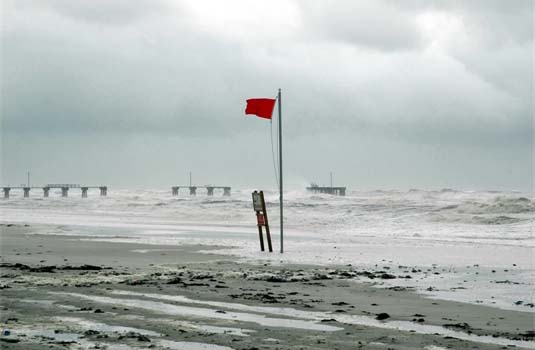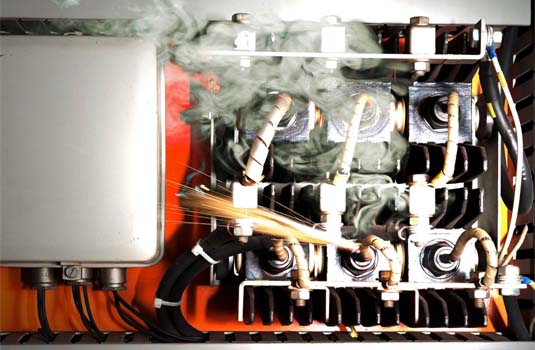|
 Electrical power, in the short span of two centuries, has become an indispensable part of modern day life. Our work, leisure, healthcare, economy, and livelihood depend on a constant supply of electrical power. Even a temporary stoppage of power can lead to relative chaos, monetary setbacks, and possible loss of life. Our cities live on electricity and without the customary supply from the power grid, pandemonium would break loose. Power outages can be especially disastrous when it comes to life-support systems in places like hospitals and nursing homes, or in co-ordination facilities such as in airports, train stations, and traffic control. Electrical power, in the short span of two centuries, has become an indispensable part of modern day life. Our work, leisure, healthcare, economy, and livelihood depend on a constant supply of electrical power. Even a temporary stoppage of power can lead to relative chaos, monetary setbacks, and possible loss of life. Our cities live on electricity and without the customary supply from the power grid, pandemonium would break loose. Power outages can be especially disastrous when it comes to life-support systems in places like hospitals and nursing homes, or in co-ordination facilities such as in airports, train stations, and traffic control.
Fortunately, most life support facilities have a source of backup power that is ready to automatically take over should the main power grid fail. Backup power is also increasingly being used in corporate facilities, manufacturing, mining, businesses, and even residential houses as the dependence on electronics and computers in our daily lives increases. While a loss of power in smaller scale settings may not be life threatening, it can result in lost data, missed deadlines, decrease in productivity, or loss of revenue.
It is important to know about the possible causes of power failure in order to better protect ourselves and our businesses from its devastating effects. Once we have identified all that can possibly go wrong, it is easier to ensure that adequate safeguards are put into place. Here are a few of some of the obvious, and some not so obvious, causes of power failure:
(1) Natural Causes - Weather Related:
The Edison Electric Institute states that 70% of power outages in the U.S. are weather related. Numerous power failures are caused by natural weather phenomena such as lightening, rain, snow, ice, wind, and even dust. While it is more difficult to safeguard from major power failure from natural calamities like floods and severe storms, it does not take much to safeguard your electrical systems from the effects of water and dust. Water can lead to short circuits and power failure. The damage caused due to water in electrical circuits can be very expensive so it makes sense to ensure that you are well protected from it. Electrical switchboards, wires, and circuits should be protected from exposure to water. Dampness and excessive moisture can also lead to serious damages. If you live in areas with high levels of humidity, you should consider investing in specially sealed circuit protection devices.
Dust can also wreack havoc with electrical systems and lead to short circuits and power failures. If you live in an area that is exposed to dust or sandstorms, you should pay special attention to the location of your electrical circuits and ensure that they are protected from dust exposure as much as possible. Sealed circuit boxes can also help in protecting your critical electrical equipment and can aid in preventing unplanned power failures.
Natural disasters have historically been at the root of the world’s most severe power outages. Hurricanes, floods, wind storms, earthquakes, tsunamis, and other severe weather can completely destroy critical power infrastructure and result in outages that leave expansive geographic regions without power for days, weeks, and even months. For a list of some of the largest power outages in history and what caused them, be sure to visit this page: List of Power Outages.
(2) Other Causes of Outages:
The Edison Electric Institute study also indicates that animals coming into contact with power lines, such as large birds, accounted for 11% of outages in the United States. Additional causes of failures were primarily man made outages that show up in the form of vehicle and construction accidents with power poles and power lines, maintenance from utilities, and the occasional human error.
For more information on some specific things that contribute to outages, common terminology used to describe various situations, and ideas on things you can do to prevent failures, a number of key areas are outlined in more detail below:
Short Circuits:

A short circuit is the most commonly used term to describe the cause of a power failure. Unfortunately, it is also a term that is bandied about without people having much knowledge of what it actually means. So, what is a short circuit, and how can you protect your equipment from its effects?
A short circuit occurs when an electric current travels along a path that is different from the intended one in an electrical circuit. When this happens, there is an excessive electric current which can lead to circuit damage, fire, and explosion. In fact, short circuits are one of the primary causes of electrical fires throughout the world.
Why do short circuits occur?
Short circuits can occur when the insulation of the wiring used breaks down. It can also occur due to the presence of an external conducting material (such as water) that is introduced accidently into the circuit. Electrical batteries can explode if they are subjected to a large current. Short circuits can even occur when electric motors are forced to operate when the moving parts are jammed. This can result in abnormal buildup of current, ultimately leading to a short circuit.
Prevention & Safety
Now that we are aware of the possible causes of a short circuit, let us look at some of the ways in which we can safeguard our electrical systems from the hazards they pose. First and foremost, ensure that all the equipment that is used in your electrical installation is composed of good quality materials and meets the correct specification for your application. The initial installation costs may be higher than a system made with cheaper materials but the savings you will make in avoiding potential losses caused by short circuits and maintenance can be substantial, not to mention the additional safety and peace of mind you get.
Wires should always be of the highest quality and of the correct gauge for your application. It should also be kept in mind that wires and other electrical circuits should not be overloaded. Electrical overload leads to overheating, causing the insulation to break down, which in turn can lead to a short circuit. Pumps, pistons, rotors and other moving parts of an electric motor should be regularly serviced and checked to ensure that there is no jamming. High quality fuses, circuit breakers, and other overload protection devices should be installed so that power can be immediately disconnected in the event of a short circuit, thereby preventing damage to sensitive equipment. When utilizing circuit breakers, it is also important to select circuit breakers of the proper rating. Water is another frequent cause of short circuits. It should be ensured that all exposed circuits are kept covered and protected from moisture.
Brownouts:
A brownout is a drop in the electrical power supply. It is so called because it leads to a drop in voltage and causes lights to become dim. Although brownouts are not total power failures, they can adversely affect electrical equipment. Induction and three-phase electrical motors (like those used in industrial diesel generators) are especially at risk during a brownout, since they can overheat and their insulation can get damaged. If your main power supply is erratic and you experience frequent brownouts, you should consider investing in a backup power system that will automatically take over and provide your equipment with the necessary power when the voltage drops.
Blackouts:
Blackouts refer to a complete loss of a power to a geographic area and is the most severe form of power outage that occurs. Depending on the root cause of the blackout, restoring power is often a complex task that utilities and power stations must undertake and repair timeframes very greatly depending on the configuration of the affected electrical network. The following article touches on how essential diesel generators are for hurricanes and other related weather disasters.
Power Surges:
Power surges are the bane of any electrical system. A power surge can lead to rapid overheating and loss of critical and expensive equipment. Fortunately, protection from such surges is available in the form of surge protectors and circuits breakers. Surge protection should ideally be integrated into your main power switchboard itself. Smaller setups, which have a limited number of critical pieces of equipment, can choose to utilize portable surge protection devices that plug in to the power grid.
Electrical trees:
Electrical treeing is a phenomenon that affects high power installations such as high voltage power cables, transformers, etc. Any impurities or mechanical defects in the equipment used in high voltage installations can lead to partial electric discharges in the equipment. The damaging process manifests itself in a tree-like pattern, hence the name electrical treeing. Over a period of time, if it goes undetected, this phenomenon can lead to a continuous degradation of the equipment and eventually result in a total breakdown.
In order to combat electrical treeing, it is important to use high quality materials that are designed to handle the electric load. Regular maintenance performed by trained engineers can also help to identify and rectify electrical treeing before it can cause a major breakdown.
Summary:
Electric power is critical to society and business alike. Weather is responsible for the majority of major power outages that occur, but as evidenced above there’s a lot more than just weather that should be accounted for when designing an electrical system. For any critical systems, be it emergency or business related, you should always get the assistance of a certified electrician. And for the best possible protection, always install a power generator as a way to ensure multiple levels of backup are in place.
|